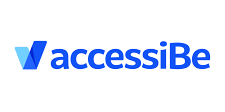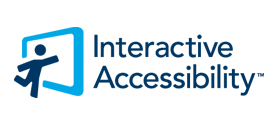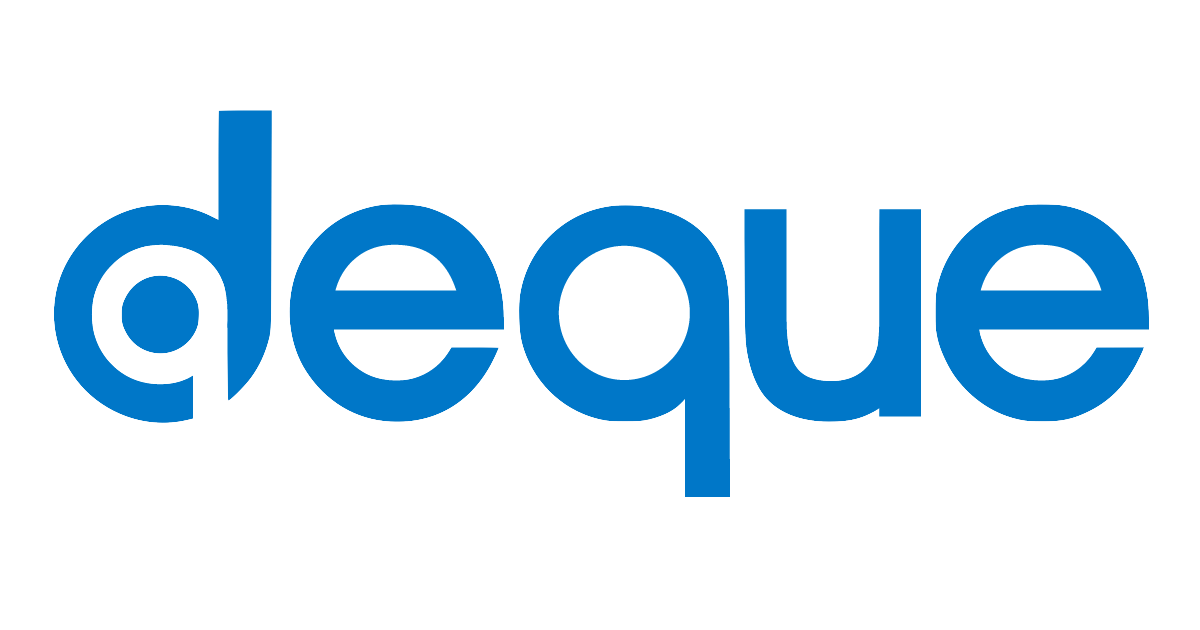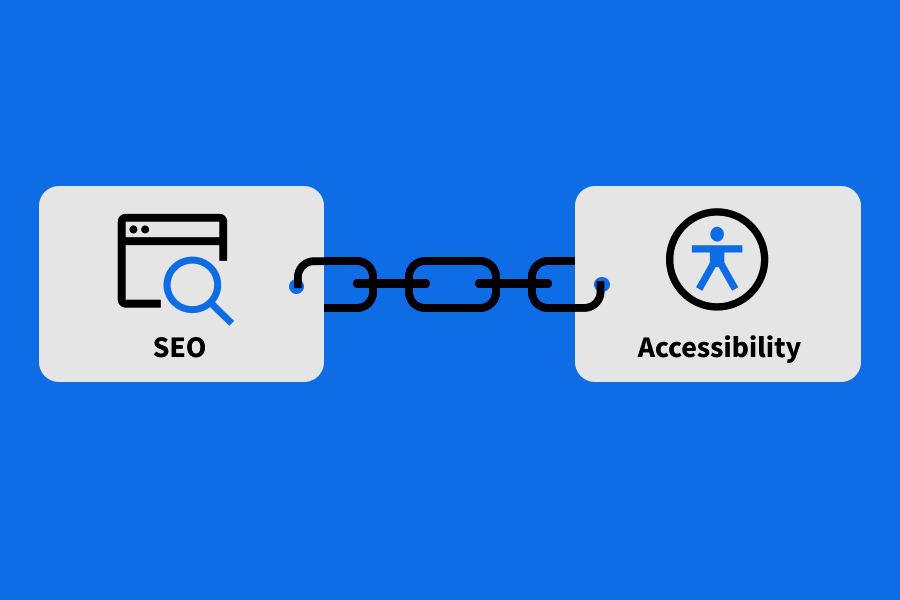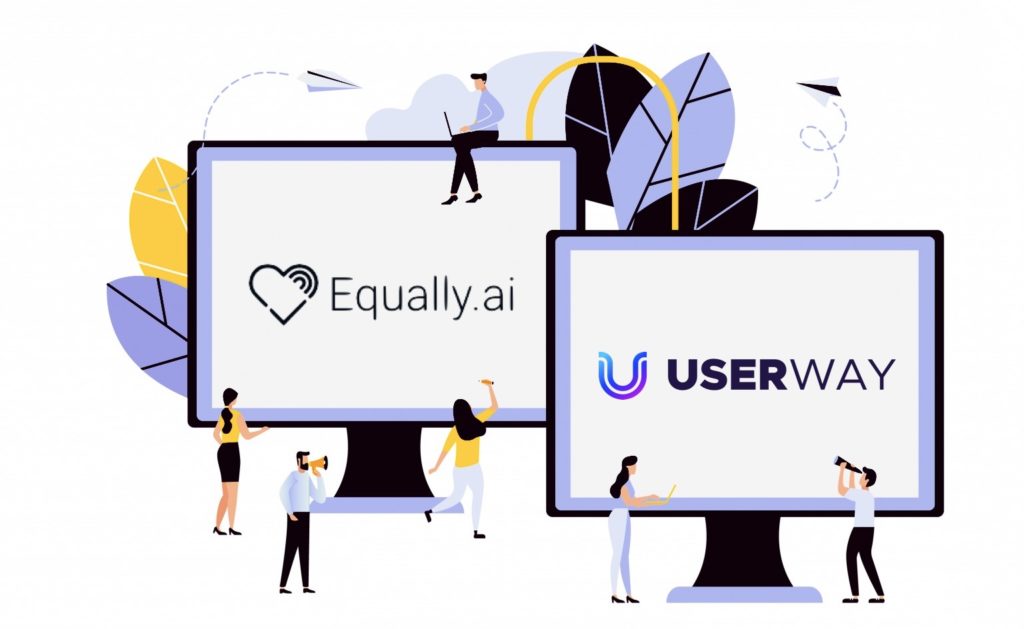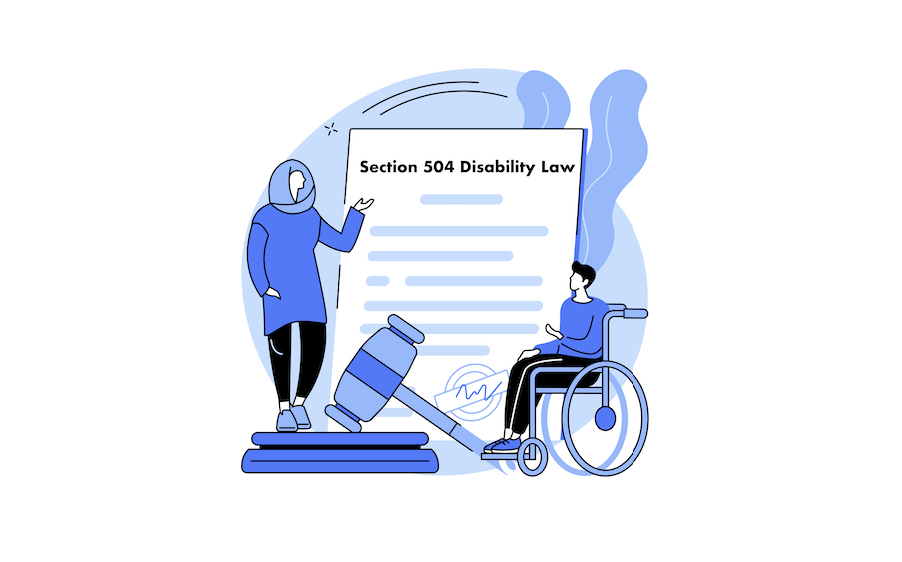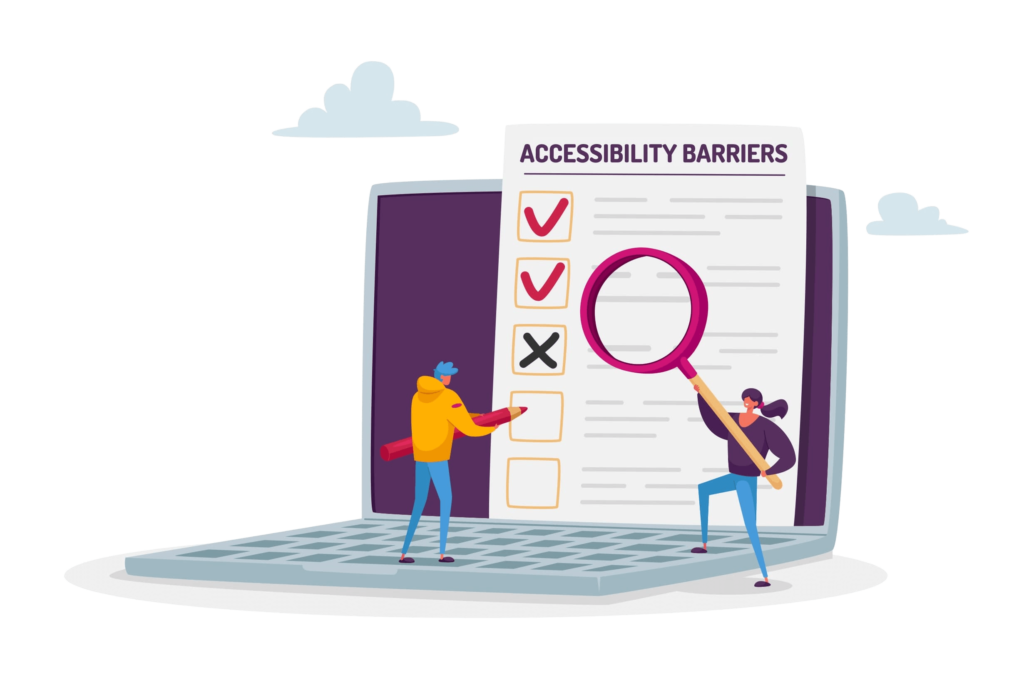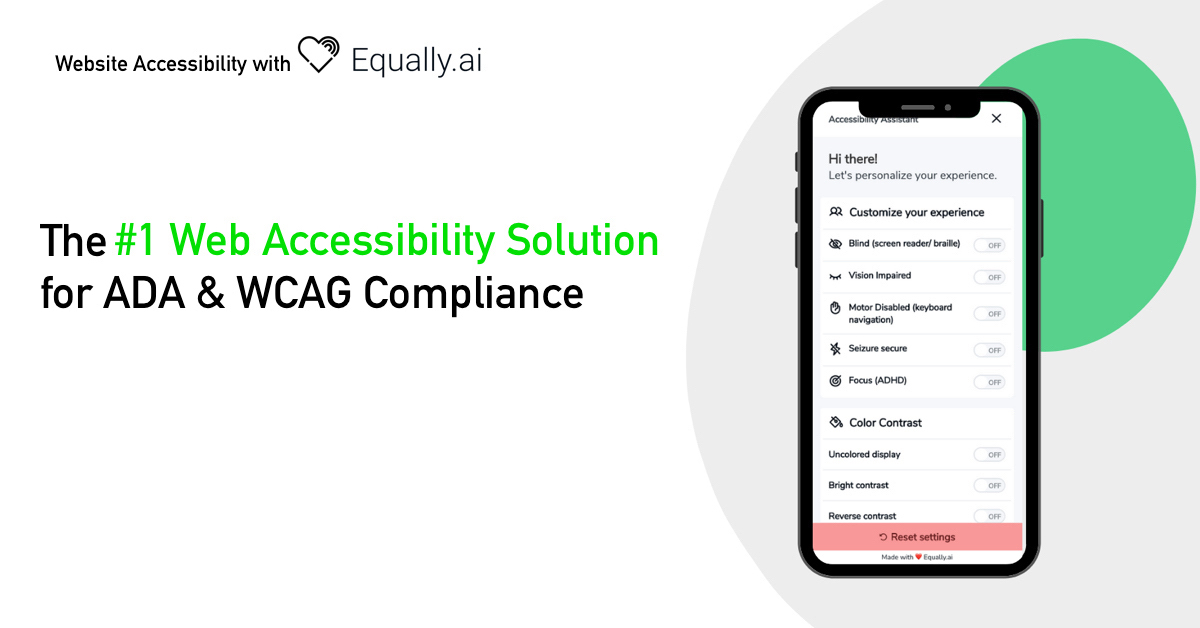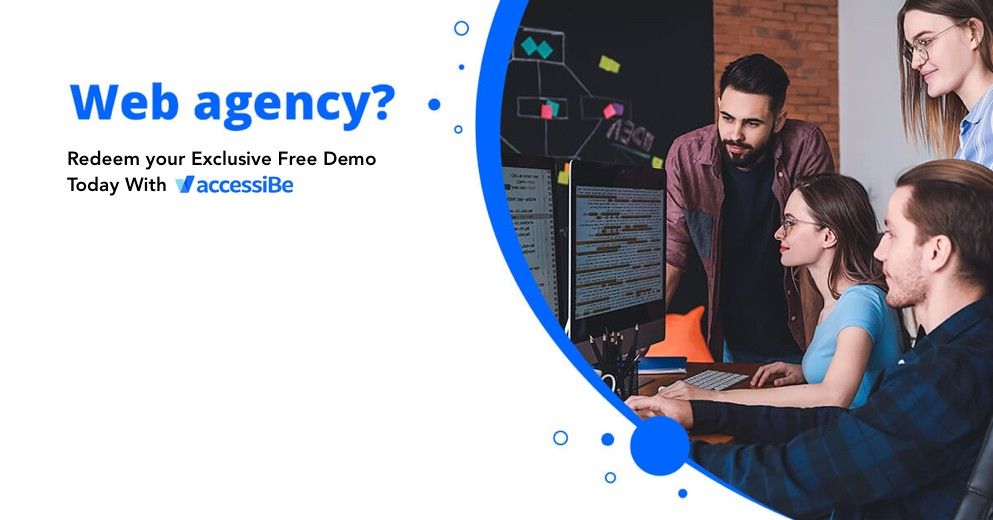
Title III of the Americans with Disabilities Act is about discrimination, which it strongly prohibits “based on disabilities in the activities of public facilities.” While the law was passed basically to call attention to impediments in physical areas, it is being applied to websites also. Besides Title III, what are other web accessibility laws in the US?
Title II of the (ADA) applies to local and state governments. Government contractors, federal agencies, and projects that get bureaucratic funding are likewise subject to Section 504 and 508 of the Rehabilitation (Act) of 1973. This act was amended to address online resources.
If those with disabilities cannot access a website, the business could be asked to redesign the website, pay attorney’s fees, and incur monetary damages. About the US web accessibility norms, US organizations are on notice.
In this article, we will take a look at what web accessibility encompasses and why it is so important. We will likewise point out the most significant accessibility guidelines in the US and walk you through ways to implement them on your website. Keep on reading!
What Does it Look Like?
Since disabilities can influence the way individuals interact on the web, website accessibility considers all the elective methods of utilizing the technology. Amongst these are screen readers and keyboard input, but likewise other different web browsers, hardware like switches, and specialized software.
Website accessibility likewise takes into account those individuals who may utilize conventional tech to browse online, then meet potential boundaries once they are there – for example, bad color contrast, fonts that are difficult to read when they are amplified, or video files without captions.
There are numerous accessibility features like these to take into account. Most of the laws set up outline the particular technical accessibility measures required. Luckily, there are resources put in place to make sure that website accessibility compliance is a smooth process.
History of Web Accessibility and the Law in the U.S.
Although there are web accessibility standards and rules to follow, businesses are not lawfully bound to apply them in the US. There is no official arrangement of web accessibility criteria or standards set out by the Department of Justice for organizations to legally agree to, other than Section 508 under Title II. So, where do so many lawsuits exist?
On the 26th of July 1990, the late President George H.W. Bush signed the Americans with Disabilities Act (ADA) into law, which is a social equality law disallowing discrimination based on disabilities. It aims to protect the privileges of people with disabilities for employment, access to local and state government services, transportation, places of public accommodations, and more. On the 26th of July 1991, the DOJ gave its final standards for following Title II and III but neither tended to site accessibility.
Title II of the (ADA) act applies to local and state government bodies. It protects people with disabilities against discrimination based on disability in programs, services, and activities offered by local and state government bodies. What we allude to as Section 508 website accessibility comes under Title II. Along this line, Title III forbids discrimination based on disability in the exercises of places of public facilities. These are companies that are normally open to the general population and there are twelve categories, including offices, recreation, medical buildings, and schools. Your e-commerce site and public mobile app come under Title III.
Who Does this Law Benefit?
Approximately, 61 million Americans report that they have a disability that affects their major activities, as indicated by the Center for Disease Control (CDC). That amounts to 25 percent of all adults living in the United States. The CDC groups disability as those affected by these classifications:
- Vision
- Mobility
- Hearing
- Independent Living
- Cognition
- Self-Care
Website accessibility laws and the US website accessibility standards are planned to ensure that anyone suffering from one of the disabilities mentioned above has a similar right of access as non-impaired.
What Makes Web Accessibility Important?
Everyone in the US who browse on the internet presently owned three or more web-connected gadgets, such as tablets, smartphones, or laptops, as per the statistical surveying company Global Web Index. Recent research from the Pew Research Center, which was conducted in 2015 revealed that eight out of ten people in the United States make purchases utilizing one of these gadgets, have now discovered that almost 30% of American adults use online payment methods for their transactions at all times!
Additionally, shoppers depend on digital experiences with brands to make payment decisions and conduct business. A large number of these people have disabilities. The law protecting the human rights of individuals with disabilities has progressively become broader and more relevant, venturing into all areas of daily activities to make sure that barriers are vanquished. And keeping in mind that accessibility in the physical areas is often what rings a bell first, it is surely not by any means the only way individuals with disabilities are participating in public activities.
For any business that has a website, mobile application, or another digital tech for the public or within a certain group like offices. Website compliance with accessibility standards is an undeniably significant consideration (and if it is not, it definitely should be!). Genuine accessibility implies completely meeting the various needs of the general public, incorporating those with disabilities who interact you’re your organization digitally.
Who Is Required to Follow Web Accessibility Laws in the US?
All public accommodation bodies are required to meet the 2018 requirements, except if they are exempt.
Public accommodation bodies are:
- Local government and central government organizations
- Some charity bodies and other non-government organizations
- The circumstances that exempt you from accessibility regulations
- All US service providers are tasked with a legal commitment to make reasonable alterations under the Equality Act 2010.
The following organizations are exempt from the accessibility laws:
- Public broadcaster alongside their subsidiaries
- Non-government organizations such as charities – except if they are largely financed by public funding, offer services that are important to the general public or aimed at the people with disabilities
The following organizations are partially exempt from the accessibility laws:
- Primary schools and secondary schools or nurseries – aside from the content individuals need to utilize services, for instance, a form that lets you state school meal inclinations
- Partially exempt organizations would need to publish a statement of accessibility on their site.
Check with your legal team if you are uncertain about whether the new accessibility laws apply to you.
Web Compliance Checklist
Web accessibility has broad rules on the best way to achieve fundamental web content accessibility. We have taken out the absolute most noteworthy fundamentals below, therefore if your site can follow the checklist below, you are well headed to delivering an accessible client experience.
- Alt-tagged Images
Images on the web must have “alt tags” (a sort of metadata) so visually impaired individuals could identify the image through text or employing a screen reader. SEO (Search Engine Optimization) will know about alt-tags as an approach to optimize pictures for ranking very high in ‘Google Images’. - Screen-reader Compatible Web Pages
Website pages should be readable by electronic “screen readers” — which are gadgets usually utilized by the visually impaired individuals to browse the web. - Alt-tagged Tables
If you are using tables on any pages, they must likewise have alt-tags — like those used with pictures — to help clarify every column via text. The user’s screen-reader will at that point read that text out loud, describing the content of the table. - Stylesheet Independence
Your website pages should not require a stylesheet to display in a manner that is understandable. They ought to be readable to the screen readers, where most of them can’t load stylesheet. - Automatic Scripting
Textual alternatives must accompany any scripted display usage of image mapping. - Text Links to Plugins
If your site needs a particular plugin to work effectively, you should introduce the link to that particular plugin in a text form. - Accessible Forms
Website forms must be usable even without a mouse, and every field ought to be labeled.
3 Simple Ways to Make Your Website More Accessible
1. Pick a content management system that supports accessibility.
There is a lot of content management structures that are available to help you build your site. Amongst them are WordPress and Drupal, however, there are numerous different options available. When you have picked a CMS that suits your necessities, try to pick a template/theme that is accessible. Consult the template’s documentation for notes on accessibilities and tips for making accessible content and formats for that theme. Be certain to follow similar rules while choosing plugins, widgets, or modules.
For elements like video players and editing toolbars, make sure that they help to create accessible content. For illustration, editing toolbars should incorporate options for accessible tables and headings and video players ought to include closed captioning. The CMS service option, (for example, posting a comment or making a blog post) should be accessible also.
2. Guarantee Content is Navigable and Logical Using Only a Keyboard
Some individuals with a mobility disability cannot use a trackpad or mouse, however, they can access the content on the web utilizing the “tab” key or other input methods. Along these lines, ensure the tab order coordinates the visual order, so there’s logical progression all through the content. At the point when a page contains a great deal of content, split it up with anchor texts, so visitors can skip to other page segments. It is likewise good practice to have a “Skip to main page” link at the top of every page, so visitors can avoid having to go through the main navigation pages.
Only Use Tables for Tabular Data. With regards to displaying data, tables are helpful. They make it a lot simpler for all visitors, including those using assistive tech, to parse a lot of information. To get the maximum advantage, however, you will need to keep your tables as straightforward as possible. Likewise, it is ideal to stay away from using tables for anything other than tabular data. For instance, you should never use a table for lists, layouts, or any other things. This can be confounding to screen readers and similar gadgets.
3. Download a web accessibility plugin and become compliant in a few minutes
Web Accessibility is a very wide topic and a lot of research is needed before you can make your website accessible to all. We advise you to do your research and fully understand all barriers and solutions to make your website accessible. But to make sure your website will be updated in just a few minutes, we advise you to explore the different solution plugins you can easily download. One of the leading web accessibility plugins companies use today is AccessiBe. We have reviewed this platform, find all the pros and cons in our AccessiBe review.
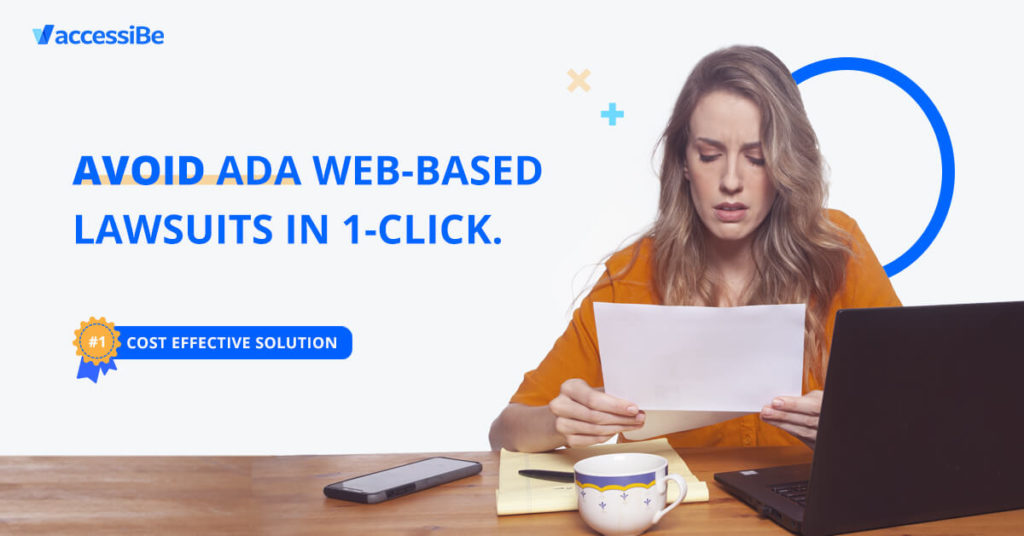
Being Web Compliant Does Not Mean Unappealing
People who are new to website accessibility are most times concerned it may hamper the quality of their site. If they endeavor to meet all the standards, won’t their site’s capacity and creative style suffer as a result? This simply isn’t true.
Web experts will tell you that accessibility and design go together perfectly – as they should! They will likewise tell you that individuals with disabilities have unbelievable buying power, and that makes an act of engaging these customers a method that will pay off abundantly. That is the reason we are certain that web compliance can be appealing on numerous levels. It merits discovering more about how you can make sure that your business is accessible – and welcoming – to people with disabilities.
Conclusion
It’s still sometimes said that web accessibility puts a lot of limitations on designs and ruins the feel and look of a site. This is not true in any way. While there might be poorly accessible sites out there, there are likewise many sites that are both terrible and inaccessible. Video, color, imagery, and different layouts could all be used if the corresponding guidelines are adequately followed.
Another thing that is not true is that accessible sites are costly when in reality you do not need to include costly additional features, you simply need to design putting all users in mind. Over the long haul, this can save you a lot of money as you get a more SEO-friendly, more usable website.
It is important to update your website to conform to the website accessibility requirements in the US. There are many different solutions to get your website accessible for all today. But which solution works best for you? UserWay vs AccessiBe: Which Is Better?


